First, let us begin with the words and how we write the Chinese characters in English. The Wade-Giles romanization system was popular from the late 1800’s through the 20th century. It was a system that helped non-Chinese pronounce and write Mandarin Chinese using English letters. It was developed mainly by two British scholars, Sir Thomas Wade (1818–1899) and later Herbert Allen Giles (1845–1935). It is still popular in Taiwan and used for certain words that have become popular through books throughout the century. {Like Tao (Dao), T’ai Chi (Taiji), I Ching (Yijing)}
Pinyin romanization was developed in Communist Mainland China and is becoming more main stream since it came out in 1979. Both systems have their unique rules on how characters are written and pronounced. To come close to the Mandarin pronunciation, one would have to learn the rules. I say come close because Mandarin uses specific tones to pronounce each character. Mandarin has four distinct tones and one neutral tone while other Chinese dialects have even more. Some people include the tones in the pinyin and others still write the characters phonetically. Note that one character can have more than one English word translation.
I have written T’ai Chi above using Wade-Giles and Qigong using pinyin. T’ai Chi in Chinese 太极 or 太极拳 T’ai Chi Ch’uan is written as Taiji or Taijiquan in pinyin. It is pronounced “Tie Jee Chwen” and means the Supreme Ultimate Fist (boxing/fighting system). The character Ch’uan or Quan denotes it is a martial art. Today the apostrophe is dropped due to the ignorance of its use, hence Tai Chi. The Ch’uan or Quan is often dropped as well. See below for more.
Qigong or Ch’i Kung (Wade-Giles) is written 氣功 or 气功 (more simplified
version of qi) and is translated as energy cultivation. It is pronounced “Chee
Gung”. First please note that the Ch’i in Ch”i Kung/Qi Gong which means
energy, life force, air and breath is not the same character as Chi in T’ai Chi/Tai Ji which means ultimate. In other words Tai Qi is not a correct
romanization. Also please note the use of apostrophes in the Wade-Giles
system. They are there to help you with pronunciation. Unfortunately, it has
now become popular to drop the apostrophes, which may confuse someone who knows the system and is appropriately called the bastardization Wade-Giles system.
Just needed to get those pet peeves out of the way. Now back to the
difference.
As mentioned above T’ai Chi Ch’uan/Taijiquan is a martial art. Being the Supreme Ultimate, many aspects of nature and energy are expressed as a means of self-defense and connecting with nature and the energy around you.
T’ai Chi is the philosophy of Yin and Yang and basically explains different aspects and the relativity of the life we live. There are a lot of martial arts in China but this one is called the Supreme Ultimate. I often contemplate why a martial art would be named after this all encompassing philosophy. Despite many physical challenges my body has faced, the martial arts have always been a passion of mine, especially those geared to smaller, weaker bodies. I have been lucky to have studied with some of the highest level masters of the 20th century.
Tai Ji Quan is truly an art of self-defense, in which one is calm and still unless threatened. Even then, a master can decide as the energy presented is being balanced how to end the confrontation. For example, one may yield and push you away (perhaps a drunk friend), or break an arm (perhaps a mugger with a weapon), or strike a point causing serious internal damage (someone trying to kill you). As you become more sensitive to energy and intention, often cultivated through the practice of push hands, you may feel what type of attack is coming your way. Your reaction to the intended attack may be so fast that it looks like you struck first. Some of you are thinking, I thought T’ai Chi was a pretty, slow motion meditation dance good for helping old people with balance. It is.
Over the centuries, it was found that practicing the fighting moves in slow
motion, paying attention to various details not only helped with the martial
aspects but also had amazing health benefits. Some benefits include improving digestion, joint health, circulation, coordination, balance and calming the mind to name a few.
Not too long ago certain martial arts, like T’ai Chi Ch’uan were only taught
to sons and kept within the family. Women in the family were not always taught because when they married, they would move in with the husband’s family. Much of these practices were kept secret. Over time as T’ai Chi was taught outside the family, it was modified for more people to be able to practice and reap the health benefits. The Ch’uan/Quan eventually was dropped as more and more teachers only learned or taught the forms emphasizing health and downplaying the martial aspects. That said it is important to note that each movement is not only precise for its martial applications but for how the energy circulates through the meridians. The good news is, even if your form is not perfect, you can get many of the health benefits.
Ch’i Kung/Qigong is a relatively modern term used to describe a very wide range of exercises and practices that help cultivate your energy. There are over 3000 sets of Ch’i Kung/Qigong some of which may have over 20 exercises. There are qigong practices that specifically assist with martial arts training, for example, iron shirt qigong. Others assist with spiritual training and may have their roots in Taoism, Buddhism and Confucianism. But all qigong benefits one’s overall health and well-being. In fact, some forms were developed or prescribed by Chinese doctors for specific diseases as well as for illness prevention. The Ba Duan Jin or Eight Pieces of Brocade is a famous set of medical qigong exercises that is over a thousand years old. It was the first complete set of qigong I studied and later taught. This set is done by martial artists, including those of the Shaolin Temple, as a warm up if you will. It is also practiced by many for general health maintenance and has been prescribed by doctors for specific ailments.
One of my patients from Hong Kong once brought me a Chinese
newspaper and said, “Check out this article.” Although my ability to speak
Mandarin was pretty good at the time, I could only read 300–400 characters.
You need about 10,000–15,000 to read a newspaper. I was able to read that the article was about the Ba Duan Jin but that was it. After I gave him a sarcastic look and a smile, he proceeded to translate it for me. It spoke of a Chinese doctor famous for his successfully treating cancer. He was retiring and not taking new patients. A woman with cancer was desperate and asked him to take her as his patient. The doctor said he could not and told her to learn the Ba Duan Jin. She took his advice and after a relatively short time (sorry can’t remember, a few months, I think) her cancer went into remission. Although I have been trained in medical qigong and am familiar with hospitals in China that teach qigong to cancer patients, this was the first time I had heard of this set being helpful with cancer patients.
The beauty of qigong is that there are practices available for everyone regardless of age, health, ability or disability. I have taught thousands of students including professional athletes and dancers as well as people with
various mental/physical/developmental/social disabilities. One of my private students was quadriplegic. He was in a wheelchair with a respirator that he was dependent on for breathing. He had some limited movement of some of his shoulder muscles. Each week, I was able to teach him a new qigong practice.
My three favorites to practice and teach that have helped me and so many others heal are the Five Elements (Wu Xing), the Eight Pieces of Brocade(Ba Duan Jin) and the Muscle-Sinews Changing Classic (Yi Jin Jing). Some qigong is more meditative and can be done sitting, standing or lying down. Most qigong are individual exercises that combine movement with breathing and/or visualization. Each exercise will have a specific intention and health benefit.
For example, there are qigong exercises for specific parts of the body, like the neck and back. Some may be for specific organs, like the lungs, stomach and the liver. Some will help with your mood and relieve anxiety and sadness while others have the intention of connecting you with the earth and the sky/heaven. Even the same exercise can be practiced differently based on the season and your development over time. While some qigong masters have demonstrated amazing martial and healing abilities that seem unbelievable, the practice is often both simple and difficult at the same time.
So, T’ai Chi is a Taoist/Daoist derived martial art that in some cases has been modified into a form of qigong exercise. Because it is considered an internal martial art, it has its own qigong exercises as part of the system. Most T’ai Chi classes begin with you learning a sequence of movements done in slow motion, which is often called meditation or stillness in motion. To grasp the depth of T’ai Chi requires many years of consistent practice.
Qigong is a more varied practice and is accessible to all. In the past, many teachers would teach qigong and call it T’ai Chi because people were slightly more familiar with the term. Simply by coordinating your breath with walking, running or swimming turns it into a qigong exercise. Even standing still is one of the easiest and most difficult qigong exercises. For many, results from a regular qigong practice can usually be felt in a few weeks. Consistent practice is necessary for long lasting effects.
Peace,
Wm.
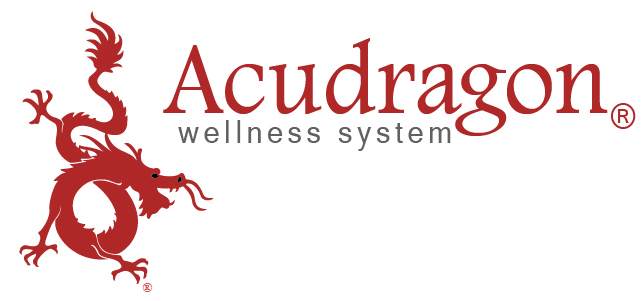
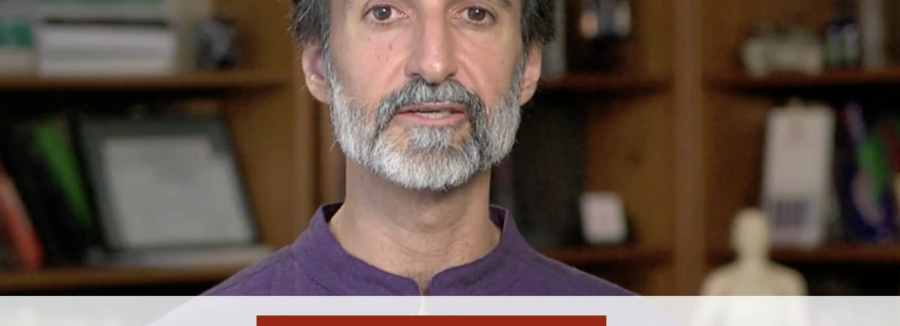


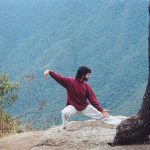







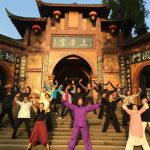
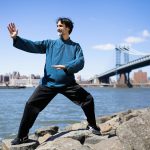

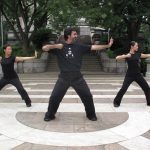
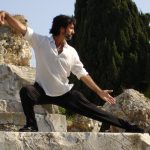





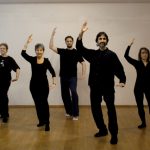
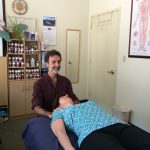

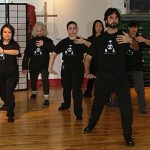
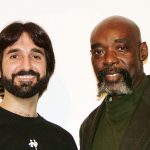



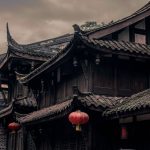





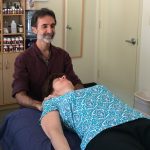










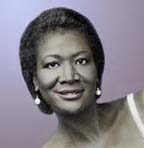





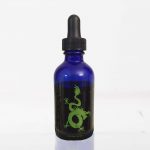


Recent Comments